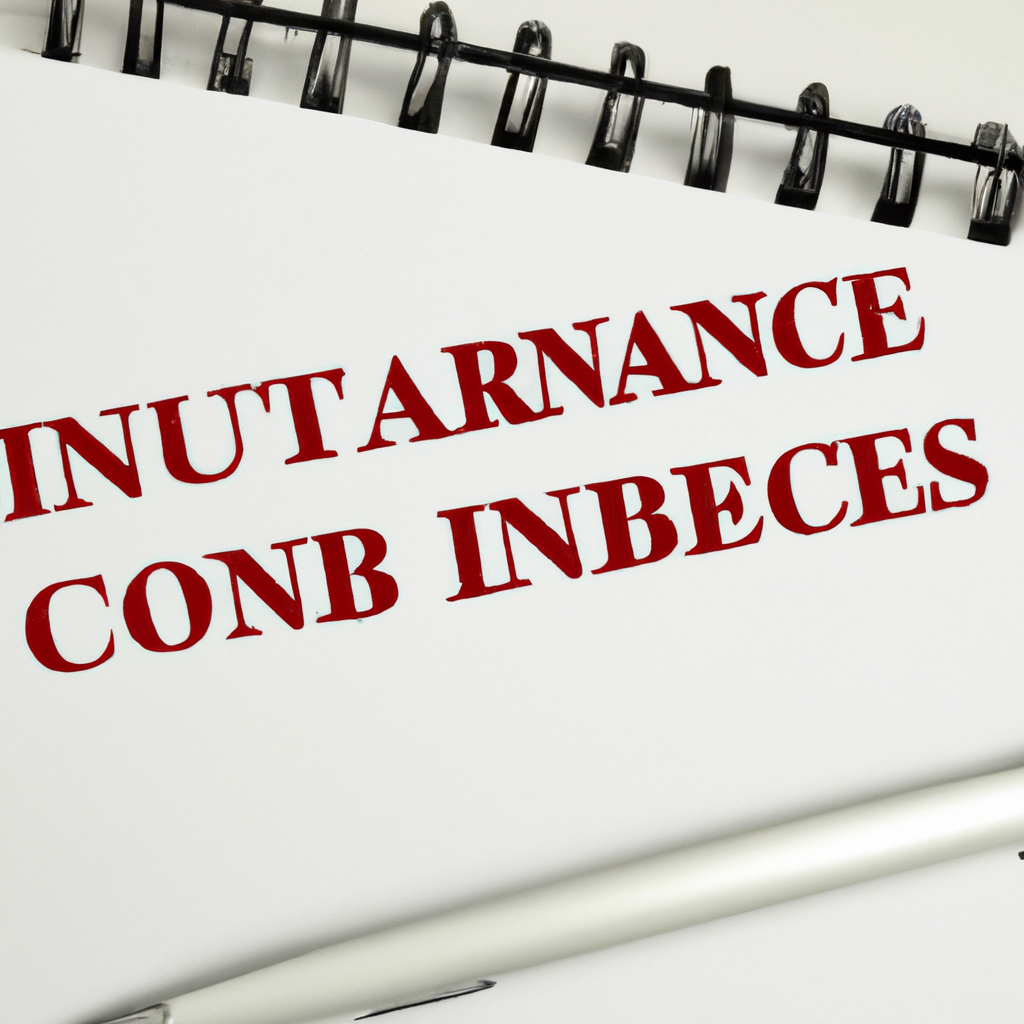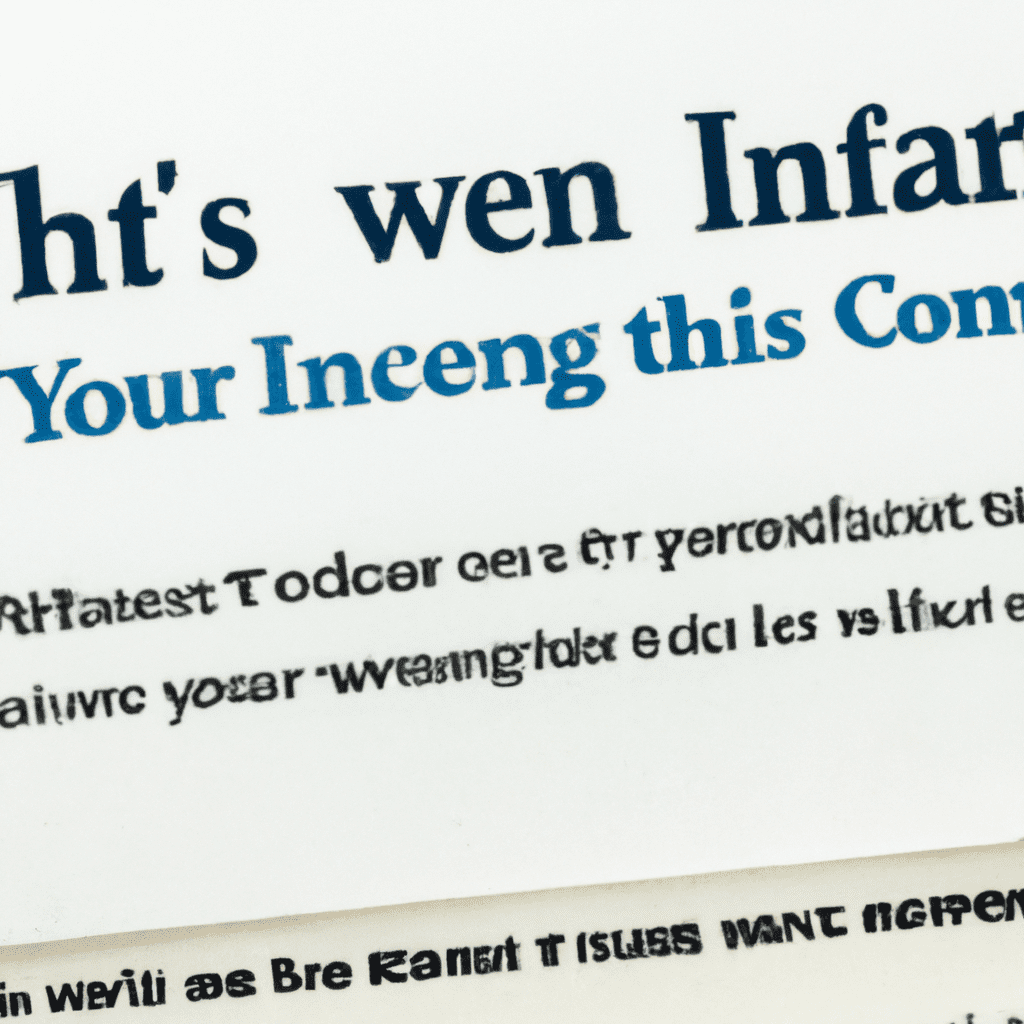Insurance coverage limits are a fundamental part of understanding what your insurance policy covers and what is excluded. Insurance coverage limits refer to the maximum amount the insurance company will pay for a given claim. Insurance coverage limits can be vary from policy to policy and even from type of coverage to type of coverage, depending on the kind of risk you’re insuring against [[1](https://www.allstate.com/resources/what-is-a-limit)].
It’s important to understand your insurance policy’s limits so you can make an informed decision about how much coverage to get. Insurance policy limits tell you the maximum amount your insurance will pay for claims, which ensures you don’t get stuck with a bill for the remainder of your claim [[2](https://www.thebalancemoney.com/what-are-insurance-policy-limits-5192903)]. You can choose coverage limits that are equal to the anticipated cost of the risk you’re insuring against [[3](https://www.thehartford.com/insights/construction/builders-risk-insurance)].
In this article, we’ll discuss just what insurance coverage limits are, what they mean, and how to choose coverage to best protect yourself from the risks you face in 2023.
Table of Contents
- 1. Overview of Insurance Coverage Limits
- 2. Different Types of Insurance Coverage Limits
- 3. Factors That Determine Coverage Limits
- 4. How to Choose the Right Coverage Limits
- Q&A
1. Overview of Insurance Coverage Limits
Insurance coverage limits are an important concept in insurance policies. It is the maximum amount of money that an insurance company will pay for a covered claim. [[1](https://www.allstate.com/resources/what-is-a-limit)] There are several types of coverage limits with varying maxima, depending on the policy and the nature of the claim.
For instance, residential buildings subject to the National Flood Insurance Program (NFIP) have a maximum coverage limit of $500,000 for contents as well as non-condominium buildings with five or more units. [[3](https://emilms.fema.gov/is_1101b/groups/74.html)] Recent evidence suggests that the cost of health insurance can significantly affect labor market outcomes. [[2](https://books.google.com/books?id=gwEN4mB1o7cC&pg=PA64&lpg=PA64&dq=Insurance+Coverage+Limits+Overview+Content+Writing+Creative+Neutral+HTML&source=bl&ots=nBjLm2iFPm&sig=ACfU3U3UKzfnJM07tha33kQMIye_rZhsJw&hl=en&sa=X&ved=2ahUKEwi-i_To2cuAAxWCPEQIHR-zAmkQ6AF6BAg0EAM)] Understanding the impact of insurance coverage limits on labor markets, whether in the health insurance sector or beyond, can help improve policy decisions.
It is important for all those who are eligible for insurance policies to read the details and terms carefully, including the insurance coverage limits. Knowing the insurance coverage limits in advance can help you choose the plan that best suits your needs, and also may help you qualify for more affordable policies by not selecting more coverage than what you need.
When you are considering an insurance policy, check with your insurer or policy provider to be sure that you understand the insurance coverage limits available to you. Considering the insurance coverage limits is a very efficient way of managing your insurance costs and making informed policy decisions.
2. Different Types of Insurance Coverage Limits
Types of Insurance Coverage Limits
The types of insurance coverage limits vary depending on the type of insurance being obtained. Generally, there are three different types: liability, property damage, and medical payments coverage. Each type offers protection for different types of losses and covers different costs.
Liability Coverage
Liability coverage is the most basic type of insurance coverage and provides protection for bodily injury and property damage expenses caused by an insured party’s negligence. This type of coverage typically offers limits of up to $15,000-$30,000 for bodily injury and $5,000 for property damage per accident. Most states have laws that require drivers to purchase a certain minimum amount of liability coverage. For example, in California, drivers must purchase at least $15,000/$30,000 for bodily injury and $5,000 for property damage[[1](https://www.insurance.ca.gov/01-consumers/105-type/9-compare-prem/auto-limits.cfm)]. In Texas, drivers must purchase at least $30,000 per person and coverage of up to $60,000 per accident for bodily injury, and $25,000 in coverage for property damage[[2](https://www.tdi.texas.gov/pubs/consumer/cb020.html)].
Property Damage Coverage
Property damage coverage pays for damage to vehicles or any other property caused by an insured party. This type of coverage typically offers limits of up to $25,000. As with liability coverage, most states have a minimum coverage requirement for their drivers.
Medical Payment Coverage
Medical payment coverage is also known as Personal Injury Protection and covers medical and funeral costs resulting from an accident. This type of coverage typically offers limits of up to $2,000. As with other types of coverage, most states have laws requiring their drivers to purchase medical payment coverage for a certain minimum amount.
3. Factors That Determine Coverage Limits
There are a range of factors that affect insurance coverage limits and ultimately how much a policyholder pays. [[1](https://www.ncbi.nlm.nih.gov/pmc/articles/PMC1002413/pdf/westjmed00117-0111.pdf)]
Age: Age is a significant factor when it comes to coverage limits. Generally, the older a person is, the more expensive their policy will be, as the risks associated with illness and injury also increase with age.
Location: Location has a big influence on how much coverage is needed due to the variance in cost of living and health care costs across different states and countries. For example, citizens in the United States need considerably higher coverage numbers than those in other countries.
Income: Income is also related to coverage limits, as those who make more money will need more coverage, as the potential financial losses associated with an injury or illness are greater.
Additional Benefits: Some types of policies come with additional benefits, and if these benefits are chosen, the premiums will increase and the coverage limits will also increase. Such benefits may include:
- Plans for private rooms for hospitalization
- Plans for maternity and newborn care
- Plans for alternative treatments like physiotherapy etc.
- Talents such as doctor’s visits without co-pays
Mode of Payment: In some cases, the mode of payment of the premium can also influence the coverage limits. For example, those who make bulk payments for the policy may get higher coverage limits compared to those who opt for monthly or yearly payments. [[2](https://developers.google.com/search/blog/2023/02/google-search-and-ai-content)] [[3](https://learn.microsoft.com/en-us/exchange/monitoring/trace-an-email-message/run-a-message-trace-and-view-results)]
4. How to Choose the Right Coverage Limits
When it comes to choosing the right coverage limits, there is no one-size-fits-all answer. It’s essential to understand some of the basics and decide what works best for you and your family.
4 Things to Consider when Deciding on Coverage Limits
- Your current financial situation
- Your current and future assets
- Your family’s current and future needs
- Your abilities to make premium payments if something unexpected happens
Knowing all of these things will help determine what kind of coverage limits you need. When it comes to limits, the higher the limit, the higher the premium cost. It’s important to have enough coverage to protect your assets in the event of an emergency but not too much coverage in order to keep your premiums affordable. Financial experts advise that you maintain a certain amount of coverage depending on your personal situation [[1](https://www.guardiananytime.com/content/dam/ga/support/member/pdf/EN-US-GUA-GuidelineUnderstandingYourLifeInsuranceCoverageLimits.pdf)]. Limiting coverage to meet your individual needs helps ensure you have the right amount of coverage without breaking the bank.
In addition to your current financial situation, it’s key to look ahead in order to make sure you’re covered in the future. You may want to consider additional coverage in the event of an extended period of unemployment or increase in family size. [[2](https://www.bloomberg.com/news/articles/2021-01-06/how-to-choose-the-right-life-insurance-coverage-for-you)]. While there may be aspects of life insurance that could be categorized as more of an inconvenience than a necessity, having the right coverage to protect your family in case of an emergency is priceless.
References:
[[1](https://www.guardiananytime.com/content/dam/ga/support/member/pdf/EN-US-GUA-GuidelineUnderstandingYourLifeInsuranceCoverageLimits.pdf)]
[[2](https://www.bloomberg.com/news/articles/2021-01-06/how-to-choose-the-right-life-insurance-coverage-for-you)]
Q&A
Length: 250 Words.
Q: What Do Insurance Coverage Limits Mean?
A: Insurance coverage limits refer to the maximum amount that an insurance company will pay out for a covered claim. This is an important limit to consider when selecting an insurance policy, as coverage limits can provide a better idea of the financial protection a policy can offer for any damages or losses incurred. [[1](https://www.ipcc.ch/srccl/chapter/chapter-7/)]
For example, if you have a flood insurance policy with a coverage limit of $50,000, then the policy will only cover up to this amount if a flood damages you home. Anything over the $50,000 coverage limit will need to be covered by the homeowner. [[2](https://www.investopedia.com/best-long-term-care-insurance-5070718)]
There may also be other restrictions or factors that can affect the coverage limit of an insurance policy. This includes things such as a policy’s deductible, waiting periods, and the discounts offered by the insurance company. These should all be taken into account when selecting an insurance policy, as they can affect the coverage limit significantly. [[3](https://www.allstate.com/resources/what-is-a-limit)]
In conclusion, the coverage limit of an insurance policy is an extremely important factor to consider when choosing one. This limit can help you determine how much protection an insurance policy can offer for any damages or losses, so make sure to look into this limit when selecting a policy.
Ending an article on insurance coverage limits can be difficult, especially when aiming for a balance between style and clarity. While it may not seem like a complete answer, understanding the basic concepts of insurance coverage limits can help individuals make better decisions about insurance policies and potentially save them money. [[1](https://www.e-education.psu.edu/styleforstudents/c1_p15.html)] As with any financial decision, it is always best to do further research to ensure you are making the best decision for yourself and your family. [[2](https://www.kiplinger.com/article/retirement/t039-c000-s004-medicare-rules-for-home-health-care.html)] Ultimately, the last decision is yours and should reflect your unique needs and financial situation. [[3](https://helensedwick.com/how-to-use-real-people-in-your-writing/)]
personal injury lawyer oklahoma
personal injury lawyer oklahoma




